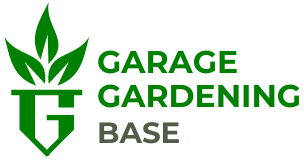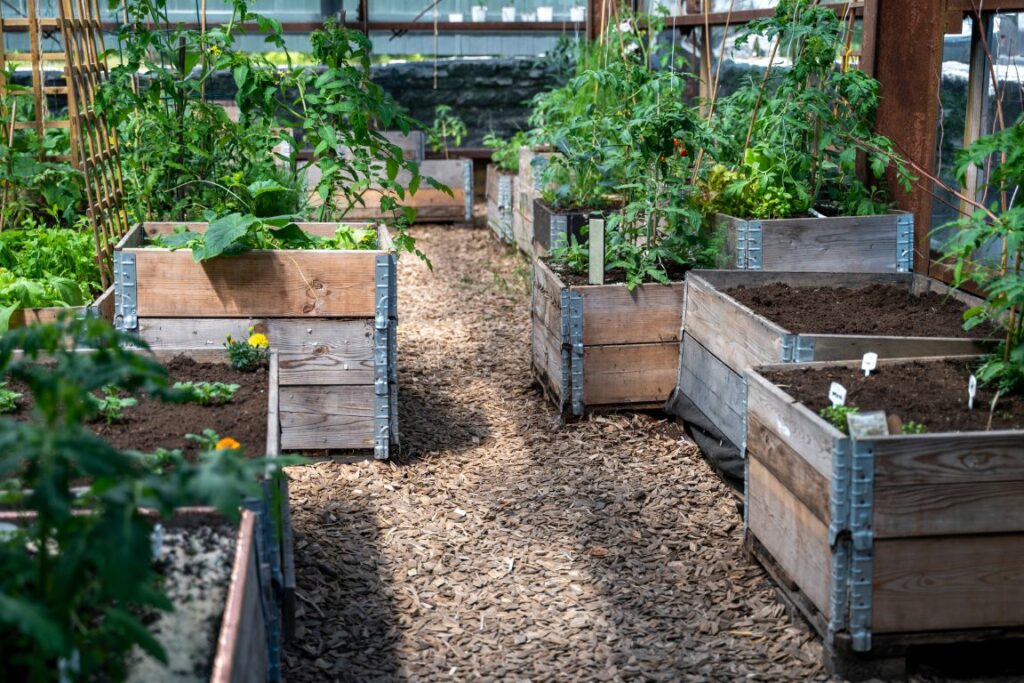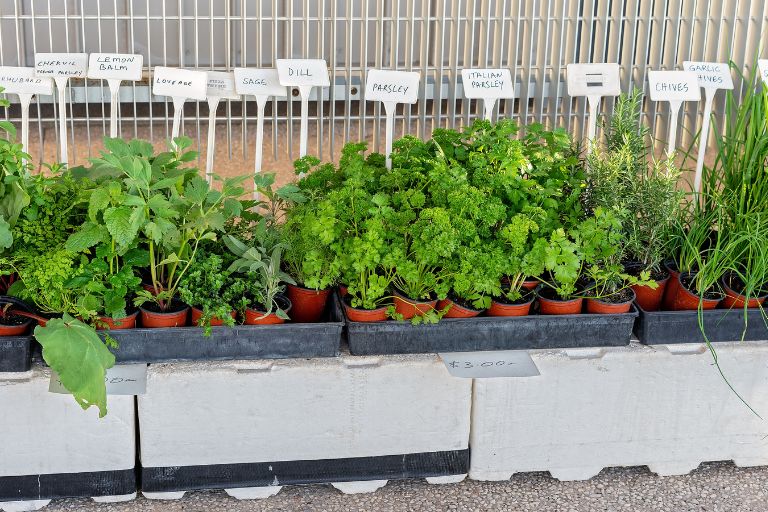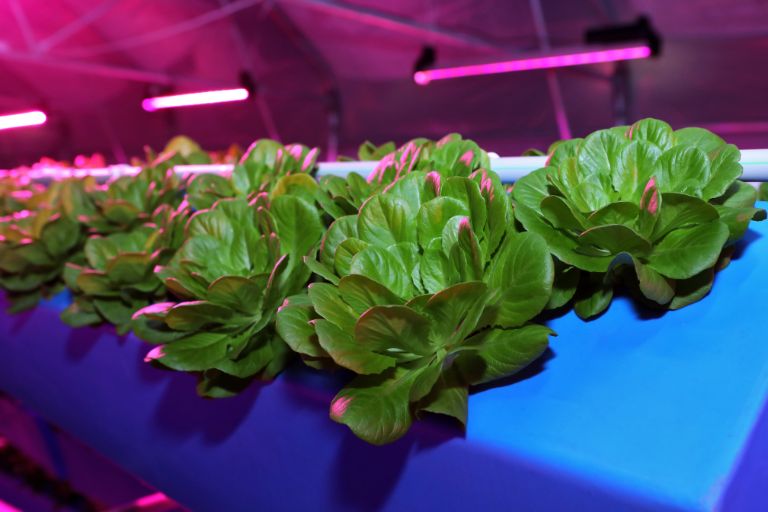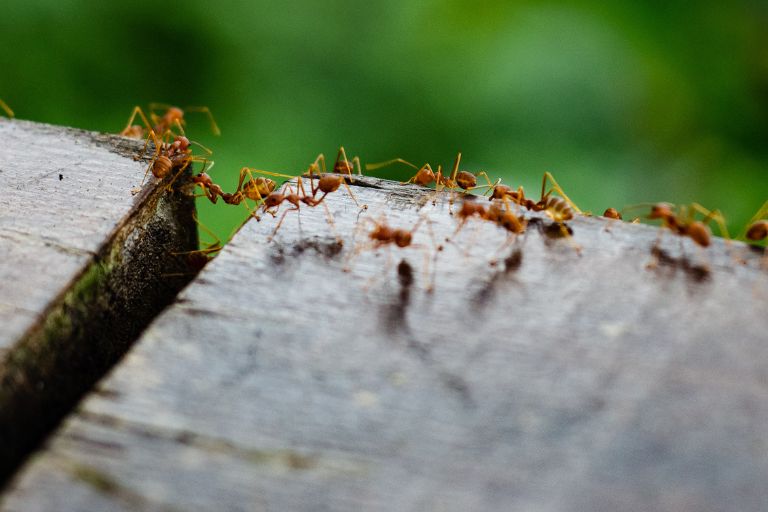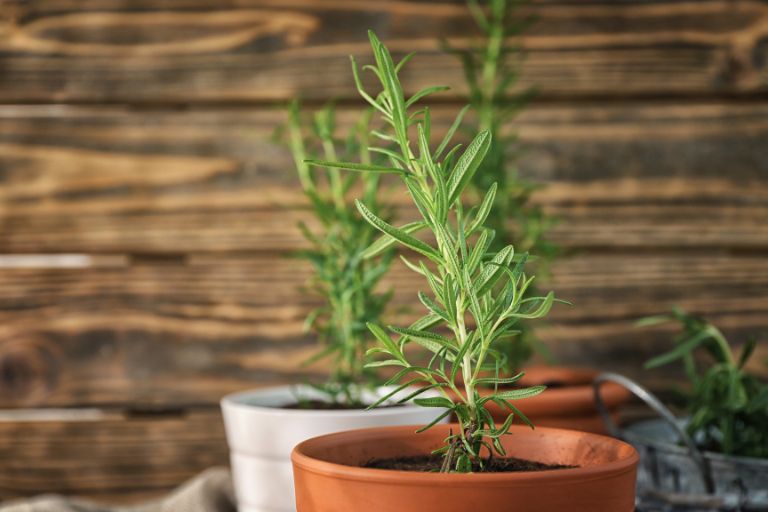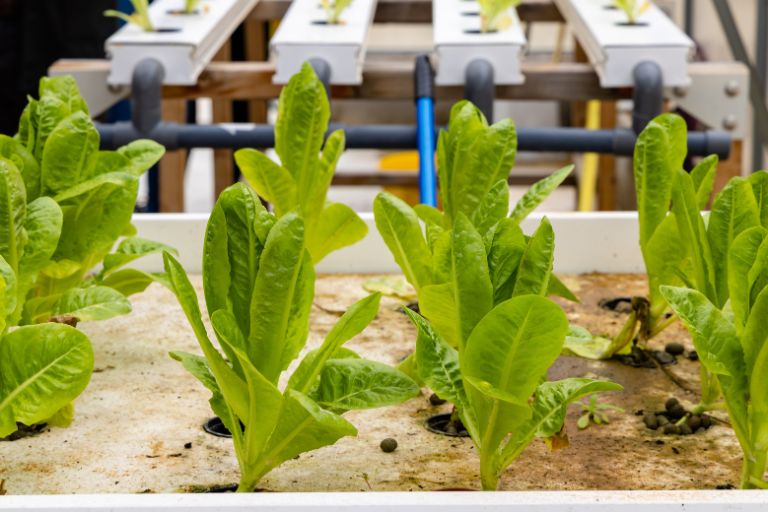Maximizing Space: A Guide to Growing Vegetables in Your Garage
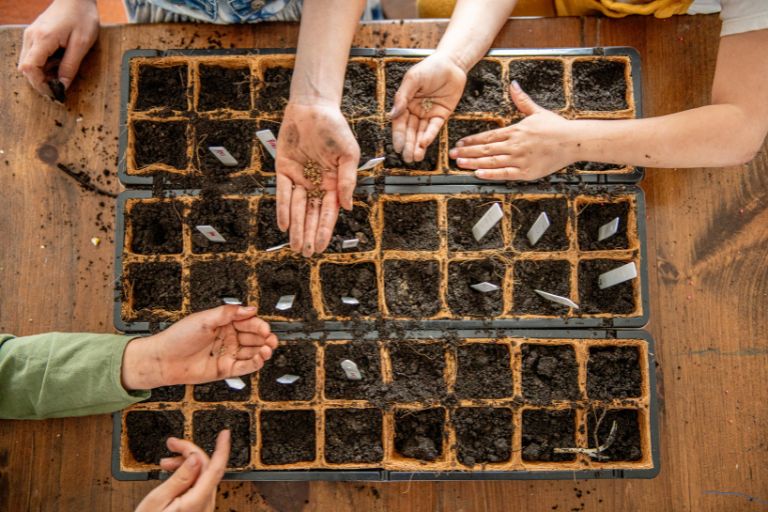
In the quest for sustainable living and self-sufficiency, many people are rethinking traditional gardening spaces and turning to innovative solutions to grow their own produce. One such unconventional but increasingly popular approach is to grow vegetables in the garage.
Often overlooked as a potential gardening space, the garage holds untapped potential for urban and suburban dwellers looking to add greenery to their limited outdoor space. Whether it’s due to space constraints, adverse weather conditions or simply a desire to grow all year round, transforming your garage into a green oasis offers a myriad of benefits and exciting opportunities.
Imagine walking into your garage and finding rows of vibrant greens, juicy tomatoes and colourful peppers thriving in carefully curated conditions. This scenario, once considered implausible, is now within reach for anyone willing to take up the challenge of indoor gardening.
In this article, we’ll delve into the intricacies of growing vegetables in your garage, exploring the essential factors to consider, from selecting the right plants and optimising light levels to maintaining ideal temperature and humidity levels. Whether you’re a novice gardener looking to embark on a new venture or an experienced green thumb looking to expand your growing repertoire, this guide will equip you with the knowledge and confidence to cultivate a thriving garden right in the heart of your home.
Join us as we unlock the potential of your garage space and demonstrate how ingenuity, dedication and a dash of green thumb magic can transform even the most unlikely of places into thriving hubs of vegetable abundance.
Choosing the Right Vegetables
When selecting vegetables for garage gardening, several factors need to be considered to ensure successful growth despite the challenges of space, lighting and temperature control. Some suitable options are:
Leafy greens
– Varieties such as lettuce, spinach, kale and chard are ideal for garage gardening due to their compact growth habit and relatively low light requirements.
– These vegetables thrive in cooler temperatures, making them suitable for indoor use where temperature control may be easier to maintain.
Herbs
– Culinary herbs such as basil, parsley, coriander and chives are excellent choices for garage gardens.
Herbs generally take up less space and can be grown in small containers or vertical gardens, making them perfect for small spaces.
– They also adapt well to varying light conditions and can thrive with adequate artificial lighting where natural light is limited.
Microgreens
– Microgreens are young, tender greens harvested at an early stage of growth, typically within 1-3 weeks of germination.
– Their rapid growth, compact size and high nutrient density make them ideal for home gardening.
– Microgreens can be grown in shallow trays or containers, making them ideal for maximising space in the garage.
Root vegetables
– Some root vegetables, such as radishes, carrots and beets, can be grown in containers with sufficient depth and loose, well-draining soil.
– Choose smaller or round varieties of root vegetables that are better suited to container gardening and don’t require a lot of space for root development.
– Provide adequate lighting and temperature control to encourage healthy root growth and prevent problems such as rotting or stunted development.
Compact fruit-bearing plants
– Certain fruit-bearing plants, such as cherry tomatoes, dwarf varieties of peppers and bush cucumbers, can be grown in containers or hanging baskets in a garage garden.
– Choose compact or determinate varieties that grow well in containers and don’t require extensive staking or trellising.
– Provide adequate light and warmth for fruit development, as these plants may have higher light and temperature requirements than leafy greens or herbs.
Mushrooms
– Mushrooms, such as oyster mushrooms or shiitake mushrooms, can be grown indoors in a controlled environment such as a garage.
– Mushroom growing kits or substrates are commercially available and can be easily set up in containers or growing bags, requiring minimal space and maintenance.
– Mushrooms thrive in dark, humid conditions, making them well suited for garage environments with limited natural light and temperature control.
When it comes to indoor gardening in spaces such as garages, choosing plant varieties that thrive with minimal maintenance is key to a successful and enjoyable gardening experience. Some varieties of vegetables and herbs that thrive indoors and require relatively little maintenance include:
Snake plant (Sansevieria trifasciata)
– Not a vegetable but a popular houseplant known for its air purifying qualities.
– Requires minimal watering and tolerates low light, making it perfect for garage environments with limited natural light.
Basil (Ocimum basilicum)
– An aromatic herb that thrives indoors with proper care.
– Requires moderate sunlight but will grow under artificial lighting.
– Regular watering and occasional pruning to encourage bushier growth is all that’s needed.
Mint (Mentha spp.)
– A hardy herb that grows vigorously indoors.
– Thrives in partial shade and can tolerate lower light levels.
– Needs constant moisture but can recover quickly if allowed to dry out occasionally.
Green Onion (Allium fistulosum)
– Easy-to-grow onions that can be grown in containers indoors.
– They need moderate sunlight and regular watering.
– Harvesting can be done by snipping off the tops as needed, allowing for continuous growth.
Spider plant (Chlorophytum comosum)
– Another air purifying plant that’s easy to grow indoors.
– Thrives in indirect light and can tolerate periods of drought.
– Requires occasional watering and is easy to propagate by dividing the plant.
Cherry tomatoes (Solanum lycopersicum var. cerasiforme)
– Compact varieties of cherry tomatoes are suitable for growing indoors.
– They require plenty of sunlight and may need supplementary lighting in a garage.
– Regular watering and vine support are necessary, but they generally require less maintenance than larger tomato varieties.
Chives (Allium schoenoprasum)
– A member of the onion family, chives are hardy herbs that grow well indoors.
– They thrive in partial sunlight and can tolerate lower light levels.
– Requires consistent watering but is relatively easy to care for overall.
Not only are these plants well adapted to indoor environments, but they also require minimal maintenance, making them perfect for garage gardening where space and time may be limited.
Setting Up Your Garage Garden
Proper planning and organisation are essential to optimise space utilisation in a garage garden. Without careful consideration of layout, plant selection and resource allocation, valuable space can be wasted, leading to inefficiencies and limiting the productivity of the garden. Planning and organisation are so important:
Maximise space efficiency
Garages often have limited space compared to traditional outdoor gardens. Planning allows you to maximise every square inch, whether it’s using vertical space with shelving or hanging baskets, or strategically placing containers to make the most of available light and airflow.
Optimise light exposure
Light is a critical factor in plant growth. Proper planning will help place plants where they will receive adequate sunlight or artificial light. Consider the direction of natural light and the placement of windows or skylights in the garage to ensure even distribution of light to all plants.
Facilitate air circulation
Good airflow is essential to prevent problems such as mould, mildew and pests. Arranging plants with sufficient space between them promotes air circulation, reducing the risk of disease and ensuring optimum growth conditions.
Ensure accessibility
A well-organised garden layout makes it easier to access plants for watering, pruning and harvesting. Consider placing taller plants at the back and shorter plants at the front to ensure all plants are within reach without overcrowding or blocking access.
Implement irrigation systems
Planning allows for the implementation of efficient irrigation systems such as drip irrigation or self-watering containers. These systems can help conserve water, minimise manual watering and ensure consistent moisture levels throughout the garden.
Taking into account maintenance requirements
Different plants have different maintenance needs. Organise plants with similar care needs together to streamline watering, fertilising and pest control tasks. This avoids confusion and ensures that each plant gets the attention it needs.
Create workstations
Designate specific areas in the garage for potting, tool storage and gardening supplies. Organising tools and supplies in easily accessible places saves time and reduces clutter, making gardening more efficient.
Adjust to seasonal changes
Plan for seasonal changes in light and temperature by grouping plants with similar environmental preferences together. This makes it easier to adjust positioning or add lighting as needed to accommodate changing conditions throughout the year.
Choosing the right containers, soil and drainage system is crucial to successful indoor vegetable gardening.
Containers
– Choose containers that are suitable for the size and growth habits of the vegetables you want to grow. Options include pots, raised beds, hanging baskets or even repurposed containers such as buckets or wooden crates.
– Make sure containers have drainage holes in the bottom to prevent waterlogging and root rot. If containers without drainage holes are used, provide adequate drainage by adding a layer of gravel or perlite to the bottom.
– Consider the material of the containers. Porous materials such as terracotta allow better airflow and moisture regulation, but may require more frequent watering. Plastic or resin containers are lightweight and retain moisture well, but may require additional drainage.
– Choose containers with handles or wheels for easy manoeuvrability, especially if you need to move plants to optimise sun exposure or airflow in the garage.
Soil
– Use a high-quality, well-draining potting mix designed specifically for container gardening. Avoid using garden soil, which can compact and restrict root growth in containers.
– Look for potting mixes that contain a balanced mix of organic matter, perlite, vermiculite and compost to provide essential nutrients, improve drainage and promote healthy root development.
– Consider adding organic amendments such as compost, aged manure or worm castings to enrich the soil and improve fertility. Be careful not to over-fertilise, however, as houseplants are more sensitive to nutrient imbalances.
Drainage systems
– Ensure proper drainage to prevent water accumulation that can lead to root rot and other moisture-related problems.
– Place containers on saucers or trays to allow excess water to drain freely without collecting around the roots. Empty trays regularly to prevent waterlogging.
– Consider using self-watering containers or wicking systems, which provide a reservoir for water storage and allow plants to absorb moisture as needed. These systems help maintain consistent soil moisture levels and reduce the risk of over or under watering.
– Check drainage regularly to ensure it remains unobstructed. Remove any debris or blockages from drainage holes to maintain optimum water flow.
Maximising sunlight and airflow is crucial for the health and productivity of plants in a garage garden. Some tips on how to position plants to optimise these factors include:
Observe natural light patterns
– Determine the direction and intensity of natural sunlight in your garage throughout the day. This will help you identify areas with the best light exposure for your plants.
– Place light-loving plants, such as tomatoes or peppers, in areas that receive the most sunlight, usually near windows or skylights. Place shade-tolerant plants, such as leafy greens or herbs, in areas with indirect or filtered light.
Use vertical space
– Make use of vertical space by installing shelves, trellises or hanging baskets to accommodate more plants without taking up valuable floor space.
– Position taller plants or climbing vegetables along the back or sides of the garage to prevent them from shading smaller plants and to maximise light exposure for all plants.
Rotate plants regularly
– Rotate plants regularly to ensure even light exposure on all sides and to prevent uneven growth. This is especially important for plants near windows, where they may receive more light from one direction.
– Rotate plants every week or two to encourage balanced growth and prevent them from stretching or leaning towards the light source.
Provide supplementary lighting
– If natural light is inadequate or inconsistent, supplement with artificial lighting using grow lights or fluorescent bulbs.
– Position grow lights above plants to mimic the intensity and spectrum of natural sunlight. Adjust the height and duration of the lighting according to the specific needs of your plants and the available natural light.
Encourage air circulation
– Arrange plants with adequate spacing to promote airflow and prevent moisture build-up that can lead to fungal disease.
– Avoid overcrowding plants, especially those with dense foliage, to allow better air circulation and light penetration throughout the garden.
– Use oscillating or circulating fans to improve airflow in the garage, especially in areas with poor ventilation. This will help prevent stagnant air and reduce the risk of pests and disease.
Monitor temperature and humidity
– Position temperature-sensitive plants away from drafts or heat sources, such as radiators or direct sunlight, to prevent stress or damage.
– Monitor humidity levels and adjust ventilation as needed to maintain optimal growing conditions for your plants. High humidity levels can encourage fungal diseases, while low humidity levels can cause moisture stress in plants.
Managing Light and Temperature
Adequate lighting is essential for growing vegetables indoors, especially in areas with limited natural light such as garages. Light is the primary source of energy for plants through the process of photosynthesis, where they convert light energy into chemical energy to fuel their growth and development. Below are several reasons why adequate lighting is essential for indoor vegetable production:
Photosynthesis – Light is essential for photosynthesis, the process by which plants convert light energy into sugars, which they use as food to fuel growth and metabolism. Without sufficient light, photosynthesis is limited, resulting in stunted growth and poor plant health.
Leaf development – Light intensity and quality affect leaf development in plants. Inadequate light can result in thin, pale leaves with reduced chlorophyll content, negatively affecting photosynthetic efficiency and overall plant vigour.
Stem elongation – Plants rely on light signals to regulate stem elongation and growth patterns. Inadequate light or inappropriate lighting conditions can result in leggy, elongated stems as plants reach for the nearest light source in search of energy.
Flowering and fruit production – Light plays a crucial role in triggering flowering and fruit production in many vegetable crops. Insufficient light can delay or inhibit flowering, resulting in reduced yields or no fruit at all.
Nutrient uptake – Light affects the uptake and utilisation of nutrients by plants. Without adequate light, nutrient uptake can be compromised, leading to deficiencies and nutrient imbalances that can affect overall plant health and productivity.
Regulation of plant processes – Light regulates several physiological processes in plants, including stomatal opening and closing, hormone production and circadian rhythms. Proper light exposure ensures the proper functioning of these processes, promoting overall plant health and resilience.
In rooms with limited natural light, such as garages, supplemental lighting is often required to provide plants with the intensity and duration of light they need for optimal growth. LED grow lights, fluorescent tubes or high intensity discharge (HID) lamps can be used to supplement natural light and provide plants with the full spectrum of light they need for photosynthesis.
When selecting your grow lights, consider factors such as light intensity, spectrum and duration to ensure they meet the specific needs of your vegetable plants. In addition, proper positioning and timing of light exposure is critical to mimic natural daylight cycles and promote healthy growth patterns in indoor vegetables.
Artificial lighting, such as LED grow lights, is an effective solution for providing supplemental light for indoor vegetable gardens, especially in areas with limited natural light, such as garages. LED grow lights have become increasingly popular due to their energy efficiency, customisable spectrum and long lifespan. Below is an exploration of LED grow lights and recommendations for optimal light duration and intensity for different vegetable varieties:
LED Grow Lights
– LED grow lights emit light in specific wavelengths that are most beneficial for plant growth, including blue, red and sometimes white or full spectrum light.
– They come in a variety of shapes and sizes, including panels, bulbs and strips, allowing flexibility in design and installation.
– LED grow lights are energy efficient and produce less heat than traditional HID (high intensity discharge) lamps, making them suitable for indoor gardening without causing excessive heat build-up.
Optimum light duration
– Most vegetable plants require approximately 12 to 16 hours of light per day during the vegetative growth stage to support healthy leaf development and photosynthesis.
– As plants move into the flowering or fruiting stage, light duration can be gradually reduced to 8 to 12 hours per day to simulate shorter daylight periods and encourage flowering and fruit production.
– It’s important to maintain a consistent light schedule and avoid abrupt changes in light duration as this can disrupt plant growth and development.
Optimum light intensity
– Light intensity is measured in units of PAR (photosynthetically active radiation) or PPFD (photosynthetic photon flux density). Different types of vegetables have different light requirements depending on their stage of growth and light preferences.
– Leafy vegetables and herbs such as lettuce, spinach and basil thrive in moderate to high light intensities of 200 to 600 µmol/m²/s during the vegetative stage.
– Fruit-bearing plants, such as tomatoes, peppers and cucumbers, require higher light intensities of 600 to 1000 µmol/m²/s during the flowering and fruiting stages to support vigorous growth and fruit development.
– It’s important to adjust the height and intensity of LED grow lights to suit the specific light requirements of each vegetable variety and stage of growth. LED grow lights typically come with adjustable brightness or dimming options to adjust the light intensity as required.
Light Spectrum
– LED grow lights offer customisable spectrum options, including blue light (400-500nm) for vegetative growth and red light (600-700nm) for flowering and fruiting stages.
– Some LED grow lights also contain additional wavelengths, such as ultraviolet (UV) or far-red light, which can affect plant morphology, flowering and nutrient levels.
– Tailoring the light spectrum to the specific needs of different vegetable varieties can improve growth, yield and overall plant health.
Regulating the temperature and humidity levels in a garage is crucial to creating an environment conducive to plant growth, especially in indoor vegetable gardens. Some strategies to help maintain optimal temperature and humidity levels include:
Insulation and ventilation
– Improve insulation in the garage to regulate temperature fluctuations. Insulating walls, ceilings and doors can help stabilise indoor temperatures, keeping them cooler in summer and warmer in winter.
– Install ventilation systems, such as exhaust fans or vents, to facilitate airflow and prevent heat build-up during warmer months. Adequate ventilation also helps to remove excess moisture and prevent the development of mould and mildew.
Temperature control
– Use portable heaters or thermostatically controlled heating mats to maintain consistent temperatures during colder months. Position heaters away from plants to avoid heat damage.
– Install a thermostat to monitor and regulate temperatures in the garage. Set temperature thresholds to ensure plants stay within their optimum temperature range for growth.
Shading and cooling
– Provide shade for plants during periods of intense sunlight to prevent overheating and sunburn. Use shade cloth, curtains or blinds to filter sunlight and reduce heat stress on plants.
– Use evaporative cooling methods such as misters or fans to reduce temperatures and increase humidity during hot weather. Evaporative cooling can help create a more comfortable environment for plants while reducing energy costs.
Humidity management
– Monitor humidity levels with a hygrometer and aim for a relative humidity of 40-60% for most houseplants, including vegetables. Use a humidifier to increase humidity levels if they fall below the optimum range, especially during the dry winter months.
– Increase humidity naturally by placing bowls of water near plants or using pebble trays filled with water. As the water evaporates, it adds moisture to the air, increasing the humidity around the plants.
– Avoid overwatering plants, as excess moisture in the soil can contribute to high humidity levels and promote fungal diseases. Ensure good drainage and allow the soil to dry slightly between waterings to maintain optimum soil moisture levels.
Monitor temperature and humidity
– Regularly monitor temperature and humidity levels with a digital thermometer and hygrometer. Place these instruments at plant level to accurately assess the microclimate around the plants.
– Track temperature and humidity fluctuations throughout the day and make adjustments as needed to maintain optimal growing conditions for your plants.

Watering and Nutrient Management
Establishing a proper watering schedule and ensuring adequate drainage are essential for maintaining healthy plants in an indoor vegetable garden, especially in a garage. Below is some advice on how to set up a watering schedule and avoid overwatering:
Assess watering needs
– Different plants have different water requirements, depending on factors such as type, size, stage of growth and environmental conditions. Research the specific watering needs of each type of vegetable you grow to determine how often and how much to water.
Monitor soil moisture
– Regularly check the moisture level of the soil by inserting your finger into the soil to the first knuckle. If the soil feels dry at this depth, it’s time to water. If it feels moist, wait a day or two before checking again.
– Consider using a moisture meter to get a more accurate reading of soil moisture. These devices provide a numerical reading of soil moisture and indicate when it’s time to water.
Establish a watering schedule
– Create a consistent watering schedule based on the specific needs of your plants and the environmental conditions in your garage. Aim to water plants early in the day to allow foliage to dry before evening, reducing the risk of fungal disease.
– Adjust watering frequency according to factors such as temperature, humidity and stage of plant growth. Plants may need more frequent watering during hot, dry weather or when they are actively growing and producing fruit.
Water thoroughly but infrequently
– When watering, ensure that the soil is thoroughly saturated to encourage deep root growth. Water until excess moisture drains from the bottom of the container, indicating that the soil is adequately moistened.
– Avoid frequent, shallow watering as this can cause salts and nutrients to build up on the soil surface and lead to shallow root development. Instead, aim for deep, infrequent watering to encourage stronger, more resilient root systems.
Ensure proper drainage
– Use containers with drainage holes in the bottom to allow excess water to drain freely. If containers without drainage holes are used, provide adequate drainage by adding a layer of gravel or perlite to the bottom to prevent waterlogging.
– Place containers on saucers or trays to catch excess water and prevent it from collecting around the roots. Empty trays regularly to avoid waterlogged soil and root rot.
Monitor plant response
– Observe how your plants respond to watering. Wilting or drooping foliage can indicate underwatering, while yellowing or wilting leaves can indicate overwatering.
– Adjust your watering schedule and practices based on your plants’ observed response to ensure they receive the right amount of moisture without being stressed by too much or too little water.
Supplying potted plants with nutrients through fertiliser or organic compost is essential to ensure healthy growth, robust development and optimal yields, especially in indoor vegetable gardens where plants rely solely on the nutrients present in the growing medium. This is why nutrient supplementation is important:
Soil depletion – Over time, the nutrients in potting soil can become depleted as plants extract them for growth and development. Unlike outdoor plants, which can access a wider range of nutrients from the soil, potted plants have limited access to nutrients and require regular supplementation.
Balanced nutrition – Fertilisers and composts provide essential nutrients such as nitrogen (N), phosphorus (P) and potassium (K), as well as secondary and micronutrients that are necessary for plant growth and metabolism. These nutrients play a key role in various physiological processes such as photosynthesis, root development, flowering and fruit production.
Optimum growth and development – Adequate nutrient availability promotes vigorous growth, strong root development and overall plant health. Balanced nutrition ensures that plants have the resources they need to produce lush foliage, abundant flowers and high quality fruits and vegetables.
Prevent nutrient deficiencies – Insufficient nutrients can lead to nutrient deficiencies, characterised by symptoms such as yellowing leaves, stunted growth, poor fruit set and susceptibility to pests and diseases. Providing supplemental nutrients helps prevent deficiencies and ensures plants have the resources they need to thrive.
Increased resistance to stress – Well-nourished plants are better able to withstand environmental stresses such as temperature fluctuations, drought, pests and diseases. Adequate nutrition strengthens the immune system and resilience of plants, reducing their susceptibility to stress-related damage.
Increased yield and quality – Proper nutrition contributes to higher yields and improved quality of fruits and vegetables. Nutrient-rich plants produce larger, tastier, more nutritious crops, increasing the overall productivity and value of the home garden.
Sustainable practices – Using organic compost as a nutrient source promotes sustainable gardening practices by recycling organic waste and reducing dependence on synthetic fertilisers. Compost improves soil structure, increases water retention and encourages beneficial microbial activity, creating a healthy and fertile growing environment for plants.
The use of self-watering containers or hydroponic systems offers several advantages for efficient water and nutrient delivery in indoor vegetable gardening:
Water efficiency
– Self-watering containers and hydroponic systems conserve water by delivering moisture directly to plant roots, minimising evaporation and run-off compared to traditional irrigation methods.
– These systems use a reservoir or water supply that delivers water on demand, ensuring plants receive consistent moisture without the risk of over or under watering.
Nutrient delivery
– Hydroponic systems deliver a controlled nutrient solution directly to the plant roots, ensuring optimum nutrient uptake and minimising nutrient loss through leaching.
– Self-watering containers can be integrated with nutrient-rich potting mixes or compost, giving plants access to essential nutrients when they need them, promoting healthy growth and development.
Reduced maintenance
– Self-watering containers and hydroponic systems require less frequent watering and maintenance than traditional watering methods. Once set up, these systems can support plants for long periods of time with minimal intervention.
– Automated watering and nutrient delivery systems reduce the need for manual watering and fertilising, saving time and effort for the gardener.
Optimal root health
– Self-watering containers and hydroponic systems promote healthy root development by providing consistent moisture and nutrient availability directly to the root zone.
– Constant access to water and nutrients promotes robust root growth, resulting in stronger, more resilient plants that are better equipped to withstand environmental stressors.
Improved plant growth and yield
– Efficient water and nutrient delivery results in faster growth rates, increased yields and higher quality produce.
– Plants grown in self-watering containers or hydroponic systems often exhibit superior growth characteristics, such as larger fruits, more abundant flowers and healthier foliage, compared to plants grown in conventional soil-based systems.
Space efficiency
– Self-watering containers and hydroponic systems are space efficient, making them ideal for indoor gardening in limited spaces such as garages or apartments.
– Vertical hydroponic systems, in particular, maximise vertical space by stacking multiple growing layers, allowing for higher plant densities and increased productivity in a smaller footprint.
Versatility
– Self-watering containers and hydroponic systems can grow a wide range of vegetable crops, including leafy greens, herbs, tomatoes, peppers and more.
– These systems are adaptable to different indoor gardening setups, allowing growers to customise their growing environment to meet the specific needs of different plant varieties.
Pest and Disease Control
Common pests and diseases can pose challenges to indoor vegetable gardens, but with the right preventative measures, you can minimise their impact and ensure the health and productivity of your plants. Some common pests and diseases that can affect indoor vegetable gardens, along with preventative measures include:
Aphids – Aphids are small, soft-bodied insects that feed on plant sap, causing stunted growth, yellowing leaves and distorted foliage.
Prevention – Inspect plants regularly for aphids and remove them by hand or with a strong water spray. Introduce natural predators such as ladybirds or lacewings to control aphid populations. Avoid over-fertilising as excess nitrogen can attract aphids.
Whiteflies – Whiteflies are tiny flying insects that feed on plant sap, causing yellowing leaves, stunted growth and the spread of viral diseases.
Prevention – Use yellow sticky traps to monitor and catch adult whiteflies. Introduce natural predators such as parasitic wasps or predatory beetles to control whitefly populations. Maintain good airflow and ventilation to discourage infestations.
Spider mites – Spider mites are tiny arachnids that feed on plant sap, causing spotting, yellowing leaves and webbing on plant surfaces.
Prevention – Increase humidity levels to discourage spider mite infestations. Regularly rinse plants with a strong water spray to dislodge mites and their eggs. Use predatory mites or insecticidal soaps to control spider mite populations.
Fungal diseases (e.g. powdery mildew, botrytis) – Fungal diseases thrive in warm, humid conditions and can cause symptoms such as white powdery growth on leaves, grey mould or leaf spots.
Prevention – Maintain proper airflow and ventilation to reduce humidity and prevent fungal growth. Avoid overhead watering as wet foliage creates favourable conditions for fungal disease. Apply fungicides or use natural remedies such as neem oil or potassium bicarbonate to control fungal infections.
Bacterial diseases (e.g. bacterial leaf spot, bacterial wilt) – Bacterial diseases can cause wilting, leaf spot and general decline in plant health. They are spread by contaminated soil, water or plant debris.
Prevention – Use sterile potting mix and clean gardening tools to prevent the introduction and spread of bacterial pathogens. Avoid overhead watering to minimise splashing and spreading of bacteria. Remove and destroy infected plants to prevent further spread.
Root rot – Root rot is caused by fungal pathogens that thrive in waterlogged soil, leading to root decay, wilting and eventual plant death.
Prevention – Ensure proper drainage in containers by using well-draining potting mix and containers with drainage holes. Avoid overwatering and allow soil to dry slightly between waterings. Treat affected plants with fungicides containing beneficial microbes to suppress fungal pathogens.
Monitor for pests and diseases -Inspect plants regularly for signs of pests and diseases, such as chewed leaves, yellowing foliage or unusual growth patterns. Early detection allows for timely intervention and reduces the risk of widespread infestation or infection.
Using natural remedies and organic pesticides is an effective and environmentally friendly way to control pest infestations in indoor vegetable gardens without resorting to harmful chemicals. Some natural remedies and organic pesticides you can use to control pests include:
Neem Oil
– Neem oil is derived from the seeds of the neem tree and is a powerful insecticide and fungicide.
– Mix neem oil with water and a small amount of dish soap to make a spray solution. Apply the solution to plants affected by pests such as aphids, whiteflies and spider mites. Neem oil disrupts the insect’s hormone balance, affecting feeding and reproduction.
– Repeat applications every 7-14 days or as needed until the pest infestation is under control.
Diatomaceous earth
– Diatomaceous earth is a fine powder made from fossilised diatoms that effectively controls crawling insects such as ants, cockroaches and beetles.
– Dust a thin layer of diatomaceous earth on plant surfaces, soil or around the base of pots to create a barrier against pests. The abrasive particles of diatomaceous earth penetrate the exoskeletons of insects, causing dehydration and death.
– Re-apply diatomaceous earth after watering or heavy rainfall to maintain its effectiveness.
Pyrethrin-based insecticides
– Pyrethrin is a natural insecticide derived from the chrysanthemum flower. It effectively controls a wide range of insect pests, including aphids, whiteflies and thrips.
– Look for pyrethrin-based insecticide sprays or concentrates labelled for use on vegetables. Follow the manufacturer’s instructions for use and safety precautions.
– Pyrethrin breaks down quickly in sunlight and does not persist in the environment, making it a safer alternative to synthetic insecticides.
Garlic and Pepper Spray
– Garlic and pepper spray is a homemade insecticidal spray that repels and deters pests such as aphids, caterpillars and beetles.
– Mix garlic cloves and chilli peppers with water to make a strong spray solution. Strain the mixture and add a few drops of dish soap to help the solution adhere to plant surfaces.
– Spray the solution on plants that are infested or as a preventative measure. Reapply every 7-10 days or after rainfall.
Beneficial insects
– Introducing beneficial insects such as ladybugs, lacewings and predatory mites is an effective biological control method for managing pest infestations.
– Purchase beneficial insects from reputable suppliers and release them into your indoor garden. These natural predators will feed on common pests such as aphids, whiteflies and spider mites, reducing their populations over time.
– Provide alternative food sources such as pollen or nectar to encourage beneficial insects to stay in your garden and establish a population.
Companion planting
– Companion planting involves growing certain plants together to repel pests, attract beneficial insects or improve soil health.
– Plant aromatic herbs such as basil, mint and rosemary near susceptible crops to deter pests with their strong scents. Marigolds and nasturtiums also act as natural insect repellents and attract beneficial insects to the garden.
Regular monitoring and early intervention are critical practices for maintaining plant health and preventing pest and disease problems in indoor vegetable gardens. Why they’re so important:
Early detection of pests and diseases
– Regular monitoring allows you to detect signs of pest infestation, such as chewed leaves, spotting or wilting, and symptoms of disease, such as leaf spots or mould growth, at their earliest stages.
– Identifying problems early gives you the opportunity to take immediate action before they escalate into widespread problems that can cause significant damage or even kill your plants.
Prevent outbreaks
– By regularly monitoring your plants, you can identify and control potential pest and disease threats before they have a chance to spread and establish themselves in your indoor garden.
– Prompt action at the first sign of trouble can prevent pest outbreaks and disease epidemics, minimising the need for more aggressive control measures later on.
Effective treatment options
– Early detection allows you to choose the most appropriate and least invasive treatment options to manage pest and disease problems.
– If caught early, many pests and diseases can be controlled using natural remedies, organic pesticides or cultural practices, reducing reliance on synthetic chemicals and minimising harm to beneficial insects and the environment.
Maintaining plant health and productivity
– Regular monitoring and early intervention help maintain the overall health and productivity of your indoor vegetable garden by ensuring that plants are free from pests, diseases and other stressors that can affect their growth and yield potential.
– Healthy plants are more resilient to environmental stressors such as temperature fluctuations, drought and nutrient imbalances, and are better equipped to withstand pest and disease pressure.
Minimising crop losses
– Timely intervention can prevent or minimise crop losses caused by pest damage, disease outbreaks or other factors that can affect plant health and productivity.
– By addressing problems early, you can save affected plants, prevent yield loss and maintain a continuous harvest of fresh, healthy produce from your indoor garden.
Promotes sustainable horticultural practices
– Regular monitoring and early intervention are consistent with sustainable gardening principles by reducing the need for chemical pesticides and promoting ecological balance in the garden.
– By adopting proactive management strategies, you can cultivate a thriving indoor vegetable garden that is resilient, productive and environmentally friendly.
Harvesting and Maintenance
Harvesting vegetables at the right time is crucial for optimal flavour, texture and nutrition. Below is a guide to when and how to harvest vegetables grown in a garage:
Consult planting guides
– Consult planting guides or seed packets for specific information on the average time to maturity for each variety of vegetable you’re growing. This will give you a general idea of when to expect harvestable produce.
Monitor growth progress
– Regularly monitor the growth of your vegetable plants, paying attention to factors such as plant size, colour and appearance of the fruit or vegetable. Most vegetables will undergo noticeable changes as they mature and become ready for harvest.
Harvest leafy vegetables
– Leafy greens such as lettuce, spinach and kale can be harvested as soon as they reach a desirable size, usually when the outer leaves are large enough to pick.
– Harvest leaves individually by cutting them off at the base with scissors, or harvest the whole plant by cutting it just above the soil level. Avoid pulling or tearing leaves as this can damage the plant.
Harvesting root vegetables
– Root vegetables such as carrots, radishes and turnips are ready to harvest when the roots have reached a suitable size and have developed a good colour.
– Gently loosen the soil around the base of the plant and carefully pull the vegetable out of the soil. Take care not to damage the roots as this can affect flavour and storage quality.
Harvesting fruit-bearing vegetables
– Vegetables that produce fruit, such as tomatoes, peppers and cucumbers, should be harvested when the fruit is fully ripe and has reached the desired size, colour and firmness.
– Use pruning shears or a sharp knife to cut the fruit from the plant, leaving a small part of the stem attached. Avoid pulling or twisting the fruit as this can damage the plant.
Harvesting herbs
– Harvest herbs such as basil, parsley and coriander as needed throughout the growing season, taking care not to remove more than a third of the plant at a time.
– Pinch or cut individual leaves or stems from the plant as required, starting at the top and working down. Regular harvesting will encourage bushier growth and extend the harvesting period.
When to harvest
– Harvest vegetables in the early morning or late afternoon when temperatures are cooler and plants are less stressed. This helps to preserve flavour, texture and nutritional value.
– Avoid harvesting vegetables during hot, sunny periods as this can cause them to wilt quickly and lose moisture.
Storage and handling
– Store vegetables immediately after harvest in a cool, dry place out of direct sunlight. Some vegetables may benefit from refrigeration to prolong freshness and shelf life.
– Handle harvested vegetables with care to avoid bruising or damage, which can affect quality and shelf life.
To ensure consistent yields and maintain the health and productivity of your garage vegetable garden, it’s important to carry out regular maintenance. Some key maintenance tips, including pruning, staking and replenishing soil nutrients include:
Pruning
– Regular pruning helps control plant size, improves air circulation and encourages bushier growth, resulting in higher yields and healthier plants.
– Remove dead or yellowing leaves, branches or stems as soon as they appear to prevent the spread of disease and pests.
– Pinch off terminal buds or side shoots to encourage branching and increase fruit production in fruit-bearing plants such as tomatoes and peppers.
Staking and support
– Support tall or vining plants to prevent them from spreading or collapsing under their own weight. Use stakes, trellises or cages to support plants as they grow.
– Secure plants to supports with soft ties or plant clips to prevent damage to stems or branches. Check supports regularly and adjust if necessary to accommodate plant growth.
Replenish soil nutrients
– Container-grown indoor vegetables gradually deplete soil nutrients over time as they take up nutrients for growth and production.
– Replenish soil nutrients by topdressing containers with compost or well-aged organic matter every few months. Alternatively, use organic fertiliser or liquid plant nutrients to supplement soil fertility.
– Monitor plant health and growth for signs of nutrient deficiency, such as yellowing leaves or stunted growth, and adjust fertiliser levels accordingly.
Mulch
– Apply a layer of organic mulch, such as straw, shredded leaves or compost, to the soil surface to conserve moisture, suppress weeds and regulate soil temperature.
– Mulching also helps improve soil structure and fertility over time as the organic mulch decomposes and adds nutrients to the soil.
Watering and drainage
– Maintain consistent soil moisture by watering plants regularly and evenly, taking care not to overwater or underwater.
– Ensure proper drainage by using containers with drainage holes and avoiding waterlogged soil, which can lead to root rot and other water-related problems.
Pest and disease management
– Monitor plants regularly for signs of pest infestation or disease symptoms, such as chewed leaves, wilting or discolouration.
– Take prompt action to control pest and disease problems using natural remedies, organic pesticides or cultural practices to prevent further damage and maintain plant health.
Crop rotation and succession planting
– Practice crop rotation by rotating different vegetable crops in your indoor garden beds or containers to prevent the build-up of pests and diseases and to maintain soil fertility.
– Practice succession planting by planting new crops as soon as previous crops are harvested to maximise space and ensure continuous yields throughout the growing season.
Regular inspection for signs of stress, disease or nutrient deficiencies is essential to maintaining the health and productivity of your indoor vegetable garden. By remaining vigilant and taking prompt action when problems arise, you can address issues early and ensure the continued success of your garden. Regular inspection and prompt action are so important:
Early detection of problems
– Regular inspections allow you to detect signs of stress, disease or nutrient deficiencies in their earliest stages, before they escalate into more serious problems.
– Identifying problems early gives you the opportunity to take immediate action, minimising the impact on plant health and productivity.
Prevent spread
– Prompt corrective action helps prevent the spread of pests, diseases or nutrient deficiencies to other plants in your indoor garden.
– Immediate isolation and treatment of affected plants can contain the problem and prevent it from spreading to nearby plants.
Minimise damage
– Taking prompt action to address stress, disease or nutrient deficiencies will help minimise damage to plants and prevent irreversible damage.
– By addressing problems early, you can reduce the severity of damage and increase the likelihood of successful recovery.
Optimum plant health and growth
– Maintaining optimal plant health and addressing problems promptly will ensure that your indoor vegetable garden continues to thrive and produce abundant yields.
– Healthy plants are more resilient to stressors and better able to withstand environmental challenges, resulting in better overall growth and productivity.
Improved crop quality
– Responding promptly to stress, disease or nutrient deficiencies helps maintain the quality of your crop, ensuring you harvest fresh, nutritious produce with optimal flavour and appearance.
– Healthy plants produce higher quality fruits, vegetables and herbs that are more enjoyable to eat and share.
Sustainability and long-term success
– Regular inspections and prompt corrective action promote sustainable gardening practices by reducing the need for chemical intervention and minimising environmental impact.
– By proactively addressing problems and maintaining plant health, you can create a resilient and sustainable indoor vegetable garden that will continue to thrive in the long term.
Vegetable gardening in a garage offers a unique opportunity to grow fresh, nutritious produce all year round, regardless of outdoor conditions. By taking advantage of the benefits of indoor gardening, such as a controlled environment and efficient use of space, gardeners can enjoy a continuous harvest of home-grown vegetables right at their fingertips.
Throughout this article we’ve explored various aspects of garage gardening, from selecting suitable vegetables and optimising growing conditions to implementing maintenance practices and overcoming common challenges. By following best practices such as proper planning, regular monitoring and proactive maintenance, gardeners can overcome obstacles and maximise the potential of their indoor vegetable gardens.
From leafy greens and root vegetables to fruit-bearing crops and herbs, the possibilities for garage gardening are endless. By providing adequate lighting, maintaining optimal temperature and humidity levels, and ensuring proper watering and nutrient management, gardeners can create a thriving indoor oasis that yields fresh, tasty produce all year round.
In addition, using natural remedies and organic practices for pest and disease management promotes sustainability and environmental stewardship, ensuring that indoor gardens remain healthy and resilient for years to come.
Ultimately, garage gardening is not just about growing vegetables – it is about connecting with nature, enjoying the fruits of our labour and fostering a sense of self-sufficiency and well-being. With dedication, creativity and a bit of green thumb magic, anyone can transform their garage into a blossoming vegetable paradise.
